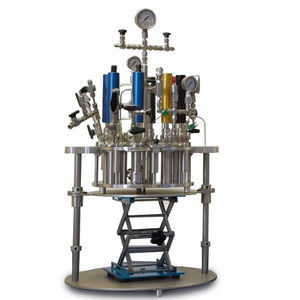
Laboratory reactor PressureSyncompactheating

Add to favorites
Compare this product
Characteristics
- Applications
- laboratory
- Configuration
- compact
- Temperature
- heating
Description
PressureSyn – High Safety Reactor: Asynt has collaborated with The University of Nottingham to bring their expertise & respect for the safety aspects of working at high pressure in the laboratory to the general market in the form of PressureSyn; an accessible benchtop scale high pressure reactor, with novel safety features built-in.
Why is PressureSyn so unique?
With a vessel volume of 125 mL, maximum working pressure of 180 bar and temperature of 200 °C with heating via any hotplate & stirring via magnetic flea, what’s significant about PressureSyn is the unique safety key & locking clamp mechanism that does not allow the vessel cover to be removed whilst any pressure remains in the system. Every safety key & clamp are unique therefore ensuring that it cannot be undone with a spare, and include features which automatically release any residual pressure prior to removing the cover. This high-safety single laboratory pressure reactor also features a double pressure relief system with both a bursting disk & pressure relief valve.
PressureSyn laboratory pressure reactors are designed to work on any magnetic hotplate stirrer; a special DrySyn adapter plate allows the secure placement of the reactors on the hotplate stirrer; together with enhanced temperature transfer and the ability to control external temperature from a standard 3 mm thermocouple.
Designed, manufactured & tested in the UK, from traceable certificated 316 stainless steel.
Maximum working pressure of 180 bar & 200 °C
VIDEO
Catalogs
No catalogs are available for this product.
See all of Asynt‘s catalogsRelated Searches
- Laboratory gas generator
- N2 gas generator
- Pressure swing adsorption gas generator
- Glove box
- Reactor
- Stackable gas generator
- Laboratory reactor
- Laboratory filtration system
- Containment glove box
- Stainless steel glove box
- Heating reactor
- Compact reactor
- Cooling reactor
- Parallel synthesis reactor
- Stirred-tank reactor
- Vacuum filtration system
- Mobile glove box
- Flow chemistry reactor
- Mixing reactor
- Flexible glove box
*Prices are pre-tax. They exclude delivery charges and customs duties and do not include additional charges for installation or activation options. Prices are indicative only and may vary by country, with changes to the cost of raw materials and exchange rates.



